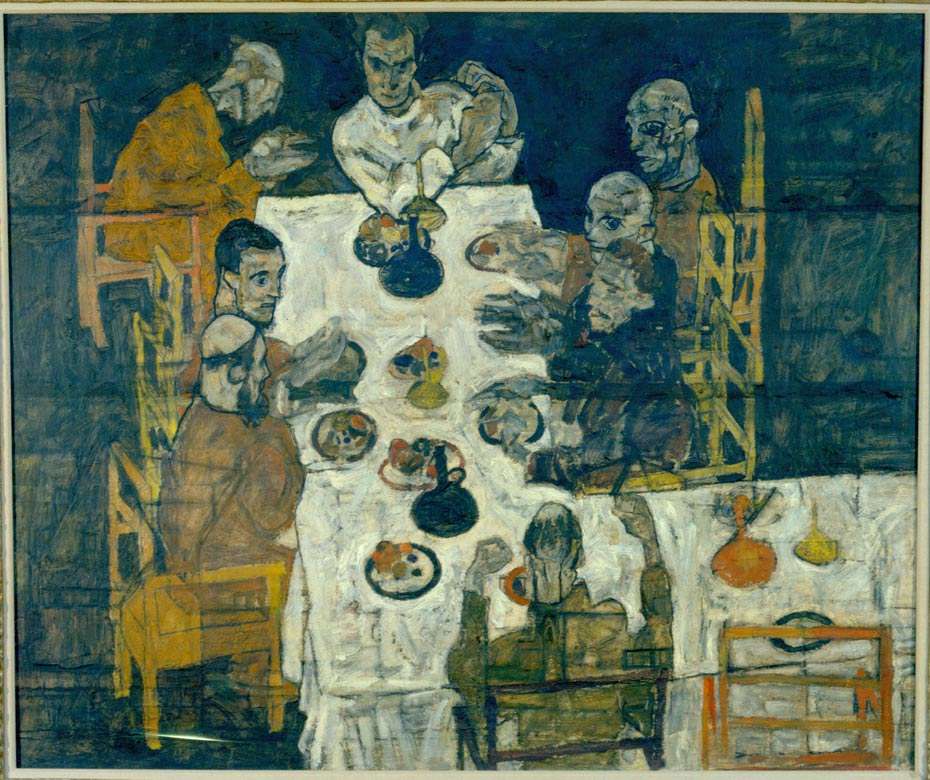Collector and philanthropist Benedict Silverman’s superb collection of German and Vienna Secession painters is about to go up for sale
— but not before it gets an outing at Richard Nagy Gallery

One of the good things about being a critic, rather than a real journalist, is that there’s no need to pretend–and it is always a pretense–that you’re neutral or impartial. Being partisan is more or less a job requirement, the only complicating factor is the imperative for honesty.
And so it is with honesty that I admit that Egon Schiele is probably my favourite 20th century painter. It’s an entirely sentimental choice, there is no point pretending that he was as “important” as Picasso or Pollack or Warhol. In the grand scheme of things, even Anselm Kiefer is probably more important. No contest with Richter.
Still, in spite, or maybe because, of his taste for melodrama and bleak sensuality, Schiele, I expect will always be special to me and to a devoted cult. A notable member of the cult of Schiele is surely the collector and philanthropist, Benedict Silverman.
Silverman, now 83-years-old, is slowly selling off his enviable collection to fund project for children’s education, and some of his prize works are currently on show at the Richard Nagy Gallery.
It would be hard for even the most neutral-minded observer to take no position on the work of Egon Schiele.
There’s a little something to offend everyone in it and possibly that’s why it’s so indispensable.
Among the works at the Nagy Gallery are some lovingly rendered pornographies, a couple of vaguely sacrilegious self-deifications, and a work that manages an incredible feat of blending Gothic horror, casual objectification of women, an unconscious but powerful critique of the patriarchical tendencies of painting, and some magnificently agonised brushwork. Take that, Chapman Brothers.
“If you like German and Vienna Secession painters, or painters full stop, you don’t have an excuse for missing this one”
The work I’m alluding to is Woman with Homunculus. Literalists will be pleased, or horrified, to know it does what it says on the tin, but, as always with Schiele, pictures are inevitably worth more than a thousand words, let alone three.
The story behind the canvas is that it is a picture of Schiele’s mistress-at-the-time who had recently been “asked” to have an abortion by the artist. Well, Rod Stewart isn’t the only one who believes every picture tells a story, but even beyond any personal mythologising, the conceptual heft of the work is as penetrating as the woman’s half-averted gaze.
It’s not the look of love she’s flashing for Egon as he finds new ways to put the “ache” in “gouache”. You could almost forget there’s a homunculus in the picture; that by itself is saying something.
There are other masterful Schieles as well, among them, Standing Boy, which offers gnarled and rough-edged lines that seem like a metaphor for the life a bad-ass kid born in Austria around the turn of the last century could expect. But it’s not just great works by Schiele that make this show memorable.
Works by a number of German and Austrian masters are included too. There are a couple of great, hasty Beckmans, some eerie Cranach-esque works by the perpetually under-appreciated Otto Dix, some Samhain-friendly Alfred Kubin drawings. Oh, and there’s a Klimt, too, if you’re a Klimt kind of person (not that there’s anything wrong with that).
If you like German and Vienna Secession painters, or painters full stop, you really don’t have an excuse for missing this one. I’m just saying.
The Silverman Collection is at Richard Nagy Gallery until November 24th




